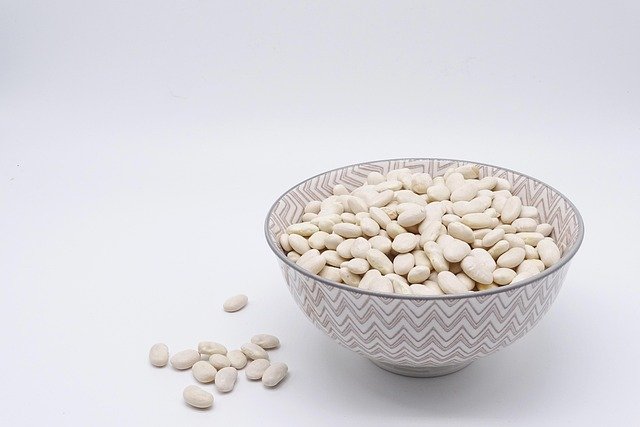Mycoprotein: The Fungal Superfood Revolutionizing Sustainable Nutrition
Are you ready to embrace a protein source that's not only nutritious but also environmentally friendly? Imagine a food that combines the best of both worlds: plant-based sustainability and meat-like texture. Enter mycoprotein, the fungal superfood that's taking the health and nutrition world by storm.

The production of mycoprotein involves fermenting Fusarium venenatum in large, sterile fermentation tanks. The fungus is fed with glucose, vitamins, and minerals, allowing it to grow and multiply rapidly. Once harvested, the resulting biomass is processed into various food products, ranging from meat substitutes to protein-rich ingredients for various dishes.
Nutritional Powerhouse: Breaking Down Mycoprotein’s Benefits
Mycoprotein boasts an impressive nutritional profile that rivals both animal and plant-based protein sources. Rich in complete proteins, it contains all nine essential amino acids necessary for human health. This makes it an excellent option for vegetarians, vegans, and those looking to reduce their meat consumption without compromising on protein quality.
One of the standout features of mycoprotein is its high fiber content. Unlike animal proteins, mycoprotein provides a significant amount of dietary fiber, which is crucial for digestive health, blood sugar regulation, and maintaining a healthy gut microbiome. This combination of protein and fiber contributes to increased satiety, potentially aiding in weight management efforts.
Furthermore, mycoprotein is naturally low in fat and contains no cholesterol, making it heart-healthy alternative to many animal-based proteins. It also provides essential minerals such as zinc and iron, often lacking in plant-based diets.
Environmental Impact: A Sustainable Solution
In an era where environmental concerns are at the forefront of global discussions, mycoprotein emerges as a beacon of sustainability in food production. Compared to traditional livestock farming, mycoprotein production requires significantly less land, water, and energy resources.
Studies have shown that producing mycoprotein generates up to 90% less greenhouse gas emissions than beef production. This dramatic reduction in environmental impact positions mycoprotein as a key player in the fight against climate change and resource depletion.
Moreover, the vertical farming techniques used in mycoprotein production allow for efficient use of space, potentially revolutionizing urban food production and reducing the need for extensive agricultural lands.
Culinary Versatility: From Lab to Table
One of the most exciting aspects of mycoprotein is its culinary versatility. Its unique fibrous structure allows it to mimic the texture of various meats, making it an ideal ingredient for creating plant-based alternatives to traditional meat products.
Chefs and food scientists are continually exploring new ways to incorporate mycoprotein into diverse cuisines. From burgers and nuggets to more sophisticated dishes like stir-fries and curries, mycoprotein adapts well to different cooking methods and flavor profiles.
The neutral taste of mycoprotein allows it to absorb flavors effectively, making it a versatile base for a wide range of recipes. This adaptability has led to its increasing popularity not only among vegetarians and vegans but also among flexitarians and meat-eaters looking to diversify their protein sources.
Overcoming Challenges and Future Prospects
Despite its numerous benefits, mycoprotein faces challenges in gaining widespread acceptance. Some consumers remain skeptical about fungal-based foods, while others have concerns about potential allergenicity. However, ongoing research and improved production methods are addressing these issues, enhancing the safety and acceptability of mycoprotein products.
The future of mycoprotein looks promising, with continued research focusing on improving its nutritional profile, enhancing production efficiency, and expanding its applications. As global demand for sustainable protein sources grows, mycoprotein is poised to play a significant role in meeting nutritional needs while minimizing environmental impact.
Mycoprotein Marvels: Quick Facts and Tips
• Protein Powerhouse: Mycoprotein contains about 11 grams of protein per 100 grams, comparable to many animal proteins.
• Fiber Boost: A 100-gram serving of mycoprotein provides around 6 grams of dietary fiber, promoting digestive health.
• Low-Fat Option: Mycoprotein contains less than 3% fat, making it an excellent choice for low-fat diets.
• Cooking Tip: For best texture, avoid overcooking mycoprotein products. They typically require less cooking time than meat.
• Versatile Ingredient: Try crumbling mycoprotein into sauces or using it as a meat substitute in your favorite recipes.
• Storage Advice: Most mycoprotein products can be frozen, extending their shelf life and reducing food waste.
As we navigate the challenges of feeding a growing global population sustainably, mycoprotein stands out as a innovative solution. By embracing this fungal superfood, we can take a significant step towards a healthier, more sustainable future. Whether you’re looking to reduce your environmental footprint, explore new protein sources, or simply diversify your diet, mycoprotein offers a nutritious, versatile, and eco-friendly option worth considering.





